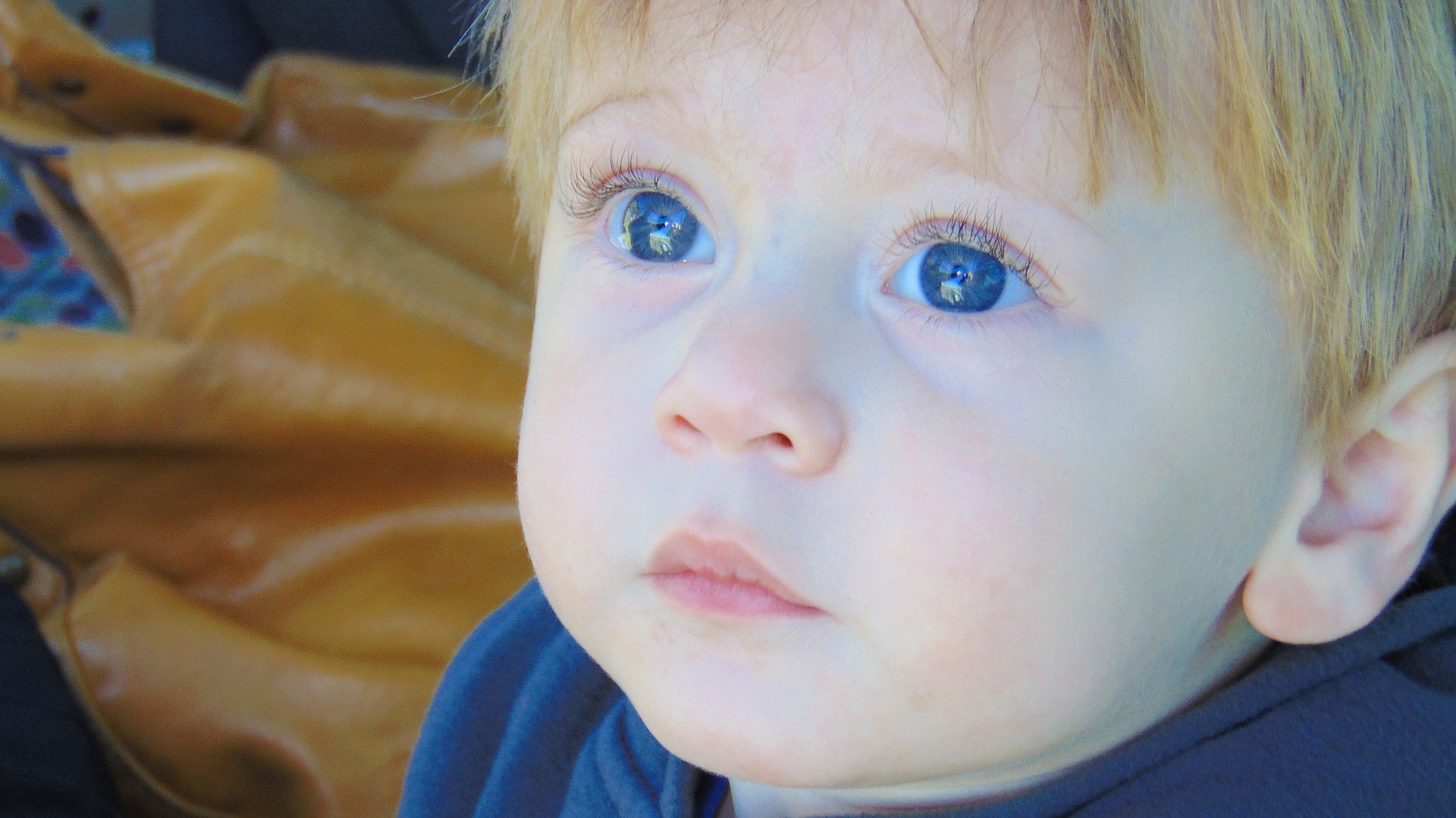Conflict resolution
 Theories of conflict resolution seek to increase individuals’ rate of cooperation in order to decrease the power of one’s social identity on behaviour.
Theories of conflict resolution seek to increase individuals’ rate of cooperation in order to decrease the power of one’s social identity on behaviour.
Gordon Allport (1954) wrote: “It has sometimes been held that merely by assembling people without regard for race, color, religion, or national origin, we can thereby destroy stereotypes and develop friendly attitudes.” This has become known as the Intergroup Contact Theory. However, simply “assembling” people is not enough. More recent researchers have added more detail to Allport’s very simple hypothesis. Amir (1969) argues that prejudice is strengthened or increased if contact between two groups produces competition and is unpleasant. It is also a problem if the status of one group is lowered as a result of contact, or when one group is left frustrated. Prejudice can be reduced, however, when the contact is cooperative and the groups are seen as equals.
ATL: Thinking critically
Conditions in which contact may reduce conflict between groups
- Cooperation between the two groups leads to positive results.
- Cooperation needs to be done on an equal status.
- Cooperation must be for a valued, common goal
- There is a realistic opportunity for deep, meaningful relationships to form. Allport called this “friendship potential.”
- The activity is sanctioned by some form of an authority figure; for example, a family, religious group or government body.
For each of these conditions, why do you think that this is so important in reducing conflict?
For each of these conditions, why do you think that this is so important in reducing conflict?
Cooperation between the two groups leads to positive results. This is simply operant conditioning. When we are rewarded for a behaviour, we are more likely to continue this behaviour - in this case, cooperating with the other group. This is what is called "positive reinforcement."
Cooperation needs to be done on an equal status. If one group feels that the other group is superior to them, they will not see this as cooperation - but as help. In cases of conflict, they may see it as patronizing or imperialistic, leading to distrust, resentment, or further conflict once the cooperation ends.
Cooperation must be for a valued, common goal. If someone wants to work together on something with me that I am not interested in, then this is not necessarily going to be a positive experience. If something is highly valued, then the ability to reach that goal will lead to strong positive feelings and will positively reinforce the behaviour of working together.
There is a realistic opportunity for deep, meaningful relationships to form. Allport called this “friendship potential.” This is one of the key problems with many programs that bring people together for a "summer experience of tolerance and understanding." Whether it be wealthy white Americans going to spend time with poor minority children - or Israeli Jews and Arabs, Malaysian Chinese and Muslims - if there is not a reasonable chance that friendships may be maintained after the experience, then there is only a short-term effect of diminishing conflict. In the case of programs like Seeds for Peace in Israel, there is often some success - but this is because the families that send their children to this organization may already have a more positive attitude about the two cultures living and working together.
The activity is sanctioned by some form of an authority figure; for example, a family, religious group, or government body. This could be one of two things. First, it could be a sense of belonging to the group and adopting the group's social norms. It could also be the lack of negative tuition from the group that promotes a message of conflict with the group. Social learning from television, religious organizations, and parents plays an important role in a child's development of implicit and explicit biases.
A classic example of how the intergroup contact theory can work was seen in Sherif’s Robbers’ Cave study. In order to diminish the hostility between the groups, the researchers established superordinate goals - that is, they created an urgent situation that affected both groups, and which needed all of them to participate in order for the problem to be solved. On one occasion, the water supply for the camp was disrupted; and on another afternoon, the truck broke down on an outing. By having to work together, the individual group identities were broken down, and a new, more inclusive group identity was created, and the boys now began to cooperate peacefully. The same can be observed where superordinate goals in response to natural disasters have been able to break down intergroup prejudice. In 1999, the press noted the “earthquake diplomacy” between Greece and Turkey that resulted when Turks helped Greeks after a level 5.9 earthquake struck, just six months after Greeks had helped Turks after an earthquake of similar magnitude had struck their own country.
Pettigrew and Tropp (2006) carried out a meta-analysis of 516 empirical studies and found an inverse relationship between contact and prejudice – that is, as contact between groups increased, prejudice decreased. They also found that the inverse relationship was strongest when the contact was natural and not forced. Bowen and Bourgeois (2001) found that university students’ attitudes about gays and lesbians were directly influenced by the part of the campus they lived on: those who lived closest to dorms where some gays and lesbians lived had fewer stereotypes and less prejudice against them.
There are several interactive experiences that can take place in “real life” that are not as artificial as the original Sherif study. For example, in one study, Brown et al. (2003) studied how contact between white and Afro-American athletes influenced prejudice. The researchers wanted to see if it was simply “contact” that makes the difference, or whether actual interpersonal interaction was required. In order to test this, the researchers studied athletes who played team sports on teams that had racial diversity and athletes that did individual sports who competed against people from their out-group. The researchers found that white athletes who played team sports reported less prejudice than athletes who played individual sports.
ATL: Thinking critically
Reread the paragraph above that outlines the study by Brown et al (2003). What other hypotheses could you make as to why there is this difference in levels of prejudice?
How would you redo the study in order to test your hypothesis?
Brown et al. (2003) studied how contact between white and Afro-American athletes influenced prejudice. The researchers wanted to see if it was simply “contact” that makes the difference, or whether actual interpersonal interaction was required. In order to test this, the researchers studied athletes who played team sports on teams that had racial diversity and athletes that did individual sports who competed against people from their out-group. The researchers found that white athletes who played team sports reported less prejudice than athletes who played individual sports.
What other hypotheses could you make as to why there is this difference in levels of prejudice?
For example, it could be because success or failure is based on cooperation in a team sport, but not in individual sports. Thus, maybe a more successful team will have lower levels of prejudice than a less successful team.
How would you redo the study in order to test your hypothesis?
A researcher could give testing on levels of prejudice on a group of teams over a season - and then compare levels of prejudice based on how well the teams performed.
Thinking about research
 Novotny and Polonsky (2011) carried out a survey of Czech and Slovak university students to determine which factors played a role in an individual’s level of anti-Muslim prejudice. They found that those students who had traveled to Muslim countries were more likely to have positive attitudes about Muslims.
Novotny and Polonsky (2011) carried out a survey of Czech and Slovak university students to determine which factors played a role in an individual’s level of anti-Muslim prejudice. They found that those students who had traveled to Muslim countries were more likely to have positive attitudes about Muslims.
- What type of interactions do you think take place during travel that may have a positive influence on our attitudes toward different groups?
- What are the limitations of this type of study?
What type of interactions do you think take place during travel that may have a positive influence on our attitudes toward different groups?
There are several positive experiences. These include staying in a hotel that is nicer than where you live at home, better weather, good food, feeling safe, seeing beautiful sites, getting help from locals with everything from getting on the right bus to waitstaff in restaurants, being treated kindly as a customer...
What are the limitations of this type of study?
The type of people being studied is problematic. They tend to be of a certain social class and therefore have a certain income and level of education. They chose to travel to a Muslim country in the first place - so they clearly were not anti-Muslim before they went! In addition, when we travel our experiences with the host country are often very limited - focusing on beautiful sites, arts, restaurants, beaches, animal life, and hotels. However, not all people that spend time in a country do this. Others may be there to work with NGOs, spend a summer working as an intern, or spend a longer time getting to know the culture - for example, taking a language course. Longer travel experiences are more likely to have negative experiences - just as a matter of probability!
Limitations of the Intergroup Contact Theory
Although there are several studies that show that increased contact reduces conflict under certain conditions, there are three key limitations of the theory:
- It is difficult to create a contact situation that involves overcoming a meaningful, practical obstacle.
- The results of the experience may be limited to the context of the meeting and cannot be generalized.
- The anxiety felt by the participants may interfere with the experience.
The issue of anxiety is important. Since conflict is linked to anxiety, it is usually those that feel the most anxiety about the out-group that will refuse to take part in such contact. The research that supports the theory is made up of self-selected samples – that is, volunteers who were willing to “try it out.” For example, in studies of how intergroup contact between Israelis and Palestinians, the samples are generally made up of participants who are seeking to better understand the other side or want to work on their prejudices.
A final limitation with the samples used in such research is much more practical. When working with two distinct cultures, there is often a language barrier. This means that participants need to be selected who either can communicate through a common language – such as English - or translators must be provided. As translators can make the experience feel artificial – and they are often expensive – it is common that participants are selected who either speak the language of the out-group or can speak a common language. This leads to two potential confounding variables. If the language of communication is the language of the “superior group” in a conflict, then this only makes the lack of equity more salient. This may prove to be an obstacle to breaking down prejudice and conflict. The second confounding variable may be the level of education of the participants. Participants who can function fluently in a second language may have a higher level of education and therefore may not represent their population. This means that the results of the research would be difficult to generalize.
Can education make a difference?
 In 1977 a teacher in Iowa, Jane Elliott, decided that she would teach her students about prejudice. On the day after the assassination of Martin Luther King Jr., she had her third-grade students do a simulation – what has become known as “the Blue eyes – Brown eyes” exercise.
In 1977 a teacher in Iowa, Jane Elliott, decided that she would teach her students about prejudice. On the day after the assassination of Martin Luther King Jr., she had her third-grade students do a simulation – what has become known as “the Blue eyes – Brown eyes” exercise.
To help the students understand what it would feel like to experience racial discrimination, she told the blue-eyed children that they were “superior.” She had the brown-eyed children where brown collars so that they could be easily identified in the group. In addition, she gave the blue-eyed children privileges and told them that they should not play with the brown-eyed children. She praised the blue-eyed children and criticized the brown-eyed children.
Elliott found two things happened in her simulation. First, the brown-eyed children resisted in the beginning, but then began to accept that they were inferior. On the other hand, the blue-eyed children saw themselves as superior and acted negatively toward the brown-eyed children – bossing them around, calling them names, and even demonstrating aggressive behaviours on the playground.
A week later, she had the children switch roles. She observed that after having experienced the first part of the simulation, the brown-eyed children were not as aggressive as the blue-eyed children had been.
The children in this simulation reported many years later that they still reflect on this experience and felt that it had made them more aware of prejudice and discrimination. Elliott’s simulation has been used in what is referred to as diversity training with the goal of developing more positive intergroup relationships. Does this simulation work with adults?
Surprisingly, in spite of the fact that this is perhaps the most famous example of diversity training, there is very little research that supports it. Byrnes & Kiger (1990) found no significant difference in levels of prejudice toward African Americans between a control group and those that had done the simulation. However, their sample was made up of college students specializing in elementary school education. Once again, it could be a sampling bias that affected the results.
Stewart et al (2003) wanted to test the effectiveness of this simulation with US university students. The students were randomly selected from the university population to avoid sampling bias. Only participants who were unfamiliar with the simulation were accepted to take part in the study. White participants were randomly allocated to either the “blue-eyes/brown-eyes” experience that was actually facilitated by Jane Elliott, or to a comparison group in which they heard a lecture on intergroup relations. The small number of African American, Latino, and Asian American students was allocated to the simulation. In the simulation, blue-eyed participants were labeled as inferior. At the end of both conditions, the levels of prejudice were measured using three separate tests over a period of three weeks in order to increase the reliability of the results.
The participants in the simulation showed significantly more positive attitudes toward Asian American and Latino/Latina individuals than the students in the lecture condition. The participants only had a marginally more positive attitude toward African American individuals. Although this research appears to contradict the findings of Byrnes & Kiger (1990), their study focused only on African Americans. It could be that the institutionalized nature of this prejudice in the USA is much greater than prejudice against Latinos and Asian Americans, and thus shows that the simulation may not be highly effective in reducing such prejudice.
The participants did, however, report that they felt angry with themselves that they had shown prejudiced attitudes and were willing to discriminate. Like the children from the original simulation, this may have a long-term effect on their awareness and ability to reduce their own prejudices.
A key limitation of the study is that the participants’ level of prejudice was not measured before they experienced one of the two conditions. The researchers made this choice because “Elliott agreed to the assessment of her exercise only under the condition that no pretest or posttest measured be implemented prior to her session, or immediately following the exercise (p 1903).”
The Blue-Eyes/Brown-Eyes simulation is highly controversial. A less controversial approach was proposed by Elliot Aronson – cooperative learning. One example is the “jigsaw classroom.” In a jigsaw classroom, students must rely on each other for their learning. The jigsaw classroom works on the idea that everyone has something to contribute to the learning process and that by working together towards a common goal, everyone is valued. Aronson & Bridgeman (1979) have shown that the use of the “jigsaw classroom” lowers the rate of bullying in schools and increases positive interaction between groups during play or free periods.
ATL: Reflection
 Look at the ATL: Thinking Critically box at the top of this page. How important do you think that these factors are in your own experience with cooperative learning?
Look at the ATL: Thinking Critically box at the top of this page. How important do you think that these factors are in your own experience with cooperative learning?
Prioritize the list from the most important to the least important. Be able to justify your position.
How important do you think that these factors are in your own experience with cooperative learning?
- Cooperation between the two groups leads to positive results.
- Cooperation needs to be done on an equal status.
- Cooperation must be for a valued, common goal
- There is a realistic opportunity for deep, meaningful relationships to form. Allport called this “friendship potential.”
- The activity is sanctioned by some form of an authority figure; for example, a family, religious group or government body
Prioritize the list from the most important to the least important. Be able to justify your position.
This will be up to the students. I would have them work in groups to discuss this. I would encourage them to first think about a situation in which they would have to cooperate with a group that they find difficult.
Paluck and Green (2009) carried out a meta-analysis and found that research consistently shows that cooperative learning leads to positive peer relationships and helpfulness. However, the meta-analysis also noted that there was little evidence of the long-term effects of such learning on positive inter-group relationships. As with many studies in schools, it is difficult to fully evaluate the effectiveness of a program since there are so many variables that cannot be controlled.
A final way in which conflict may be reduced is through the use of Social Cognitive Learning theory. A field experiment was carried out by Paluck (2009) to determine if media – in this case, a radio soap opera – could be used to reduce conflict between Hutus and Tutsis in Rwanda. In her study, participants were randomly allocated either to a control group in which they listened to a soap opera about reproductive health and AIDS or the experimental group that listened to a radio soap opera about reconciliation between Hutu and Tutsi characters. The researcher used a stratified sample of 480 participants to guarantee that it represented the general population of Rwandans. 99% of the sample had been living in Rwanda at the start of the genocide. The researcher played the soap operas for the participants over a period of one year.
At the end of one year, Paluck – along with a team of Rwandan researchers – carried out individual interviews, focus groups, and behaviour observations. Compared with control group participants, participants in the experimental group demonstrated more trust of the out-group and were more willing to cooperate with them, even though their own beliefs about what had happened in the genocide had not changed. Paluck argues that the listeners’ feelings of empathy toward the soap opera characters may have led to the development of empathy for real-life Rwandans. The use of the soap opera as a means of education, rather than direct contact with the out-group, may allow people to think through difficult issues and experience intergroup contact in a vicarious and less threatening way.
ATL: Thinking critically
The Internet has been the most successful means of enabling contact among individuals who would otherwise not have the opportunity to meet. Some argue that the Internet may be the best tool yet to implement the intergroup contact theory.
Look back at the obstacles – to what extent does the Internet environment help to overcome these obstacles? What would you predict would be the potential limitations of using the Internet?
There are several potential obstacles to discuss:
The need for a meaningful reason for cooperation
Anxiety about participation
The inability to generalize outside of the context of the experience
Sampling bias
The Internet does allow for a level of anonymity that should help to reduce anxiety about participating in such experiences. The Internet also allows people to search for experiences online in a way that is efficient and allows for choice.
However, there remain the problems of both ecological validity and sampling bias in Internet-based experiences.
In addition, the ability to be anonymous also means that there may be a level of distrust or deception. As we know, deindividuation on the Internet has led to cyberbullying and trolling. For more on this topic, you may want to have students look at the presentation on deindividuation and trolling on the Internet.
Checking for understanding
Which of the following is not one of Amir’s factors that increase intergroup conflict?
Pettigrew and Tropp (2006) carried out a meta-analysis of 516 studies and found that when contact increases, prejudice decreases. One potential limitation of this study is
Which of the following is not a limitation of the intergroup contact theory?
Which of the follow is true about the findings of Stewar et al's study of Jane Elliott’s diversity training?
Paluck (2009) used a stratified sample of 480 Rwandan participants. What could this mean?
Paluck’s study found that prejudice can be reduced by

 IB Docs (2) Team
IB Docs (2) Team
